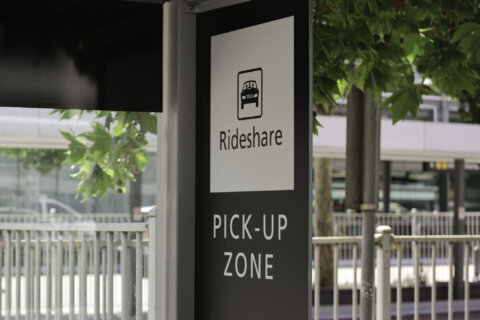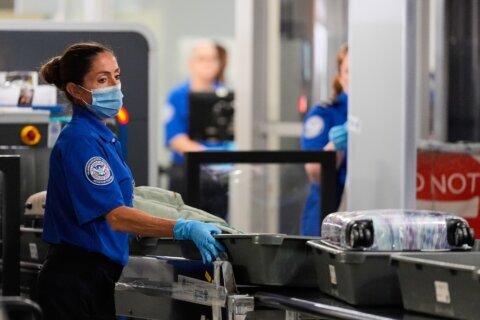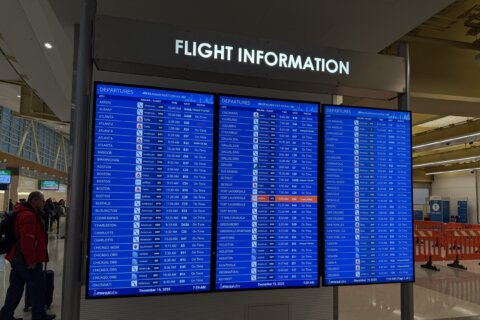Planning a trip with pets can be tricky: While new policies and perks are making it easier than ever to check in with four-legged friends, getting from point A to B can still be hassle-prone and pricey. And besides stocking up on familiar toys and creating a comfortable setting for your pawed companion, you’ll need to consider whether your pet will be anxious in a cramped airline cabin or a confined crate. Plus, you should evaluate other practical matters, such as if your pet will have trouble getting acclimated to a new environment and whether you’ll have easy access to pet relief areas and dog- and cat-friendly attractions once you arrive at your destination. To vacation with Fluffy or Fido without jeopardizing safety or comfort, U.S. News got the scoop from industry experts on top strategies for jet-setting with furry friends this year.
Car Travel
Plan Ahead and Stock Up
“With auto travel, it’s a cliché, but failure to plan is planning to fail,” says KC Theisen, director of pet care issues for The Humane Society of the United States. The best way to ensure a smooth journey is to plan where you’ll stop in advance, she says. And the next most important thing is ensuring your pet’s collar has a visible ID tag with both your permanent address and your temporary vacation location in the event you get separated. If your pet is microchipped, ensure your contact information is current, she says.
An equally important step to prep your furry friend for a road trip is loading up on essential supplies such as water, food, toys and comfort items, Theisen says. Once you’ve loaded up the car with necessities, you also need to secure your pet properly, she adds, pointing out that “we tend to assume that if they’re anchored to something they’re safe.” However, “it’s really critical to understand that a dog’s harness is not a human seat belt,” she cautions. Instead of letting pets climb into the front passenger seat, she suggests securing them comfortably in a crate or carrier.
Map Out Pit Stops
Nicole Ellis, a pet expert and the mobile product manager at DogVacay, a pet-sitting company that connects pet owners with local caregivers in popular cities such a San Francisco, Miami and Chicago, also recommends taking breaks every couple of hours. “If you’d normally stop every three to four hours, that’s probably suitable for your pooch. Older dogs, however, may need more frequent nature breaks,” she says. And never leave your pet alone in the car, she cautions, pointing out that “cars can get too hot for animals even when the temperature isn’t that high. Find pet-friendly hotels on your route through sites like BringFido [a comprehensive directory of pet-welcoming attractions, areas and lodging options] if you’ll have to stay overnight on the way.”
Remember, Practice Makes Perfect
When it comes to keeping animals calm throughout the journey, one of the best ways to reduce stress is to practice in advance, Theisen says. After teaching your pet to go in and out of a carrier, you can end the lesson with a treat at home to reinforce a positive experience and simulate the experience when traveling, she adds.
Air Travel
Ask the Right Questions
While there’s been a proliferation of pet-friendly airport and airline amenities and services, it’s important to ask a few key questions to ensure your pet won’t be at high risk while flying the friendly skies, Theisen says. Before you book your flight, she advises calling your preferred airline in advance to ask about your flight schedule, where your pet will be accommodated on the plane before and after your flight and confirming who is responsible for your pet when you’re sitting on the tarmac, pointing out that there are serious hazards for pets stowed away in cargo. “I think it’s really important to know the [Department of Transportation] publishes airline reports of pets lost or injured in transit,” she explains. “The cargo hold is not a cabin,” she adds, pointing out that where pets are placed in cargo is not the same temperature, it doesn’t have the same pressurization and it’s not lit. And while special canine amenities may be offered before or after the flight, she emphasizes that it’s critical to understand the dangerous conditions your pet can experience at 35,000 feet.
Choose Your Cabin Wisely
If flying is a necessity, Theisen recommends strategically selecting your cabin. For an additional fee (around $100 to $125 each way, depending on the carrier) some airlines, such as JetBlue and Alaska Airlines, allow furry companions to fly in the aircraft cabin. However, each airline policy varies, so make sure to read the fine print. For instance, Alaska Airlines only allows “short-nose” breeds such as French bulldogs to fly in the aircraft cabin because they are at a greater risk of developing a respiratory ailment in flight, while JetBlue welcomes cats and dogs that weigh no more than 20 pounds collectively with their carrier.
Prepare Your Pet for Security
Before your flight, forgo giving your four-legged companion medicine to stay calm, Ellis says, cautioning that such treatment can make it more difficult for dogs to change their body temperature. It’s also important to take proper precautions for the security screening process, Theisen says. “Understand that your pet will need to be removed from its carrier going through TSA,” she explains. This is an especially important step to prep for if you’re traveling with a cat, as you’ll want to make sure your cat is wearing a harness, she adds. Though you can request that your cat is privately screened, it can take an extra 20 to 30 minutes, she adds, so make sure you have plenty of spare time to reach your gate before boarding begins.
Train Travel
Consider Cost-Effective Rail Travel Along the East Coast
In October 2015, Amtrak introduced a new program for pets for two major East Coast routes, the Northeast Regional, which offers service to places such as Boston and Norfolk, Virginia, and the Downeaster, which offers service to destinations like Boston and Brunswick, Maine. For a $25 fee, a small cat or dog weighing a maximum of 20 pounds (with its carrier) is welcome aboard. But hurry up and book your train tickets — this pilot program is only running until Feb. 15, 2016. And if you do bring your feline or canine friend along for the ride, Theisen recommends bringing along a familiar chew toy or an old blanket to maximize comfort.
Cruise Travel
Check Out Cunard
Cunard Line‘s Queen Mary 2 welcomes cats and dogs aboard its ship on select voyages (from $500 to $1,000, depending on the kennel selected) and even boasts an onboard kennel master. However, Cunard Line’s upscale ship is the only pet-friendly cruise ship sailing the high seas. Also, keep in mind there are different requirements at overseas ports, and pets must possess their own passport, so make sure to do your research before booking a sailing with your companion.
Bottom Line
Consider All Options
It’s important to factor in your pet’s individual personality, and assess whether nervousness or motion sickness might kick in on the road or in flight, Theisen says, emphasizing that it’s unwise to give pets tranquilizers or sedatives on your own. The smarter approach is talking to your vet about the specific trip your planning to ensure your pet’s health is in order, she says. Plus, after you consult with your vet, you can better determine whether it make sense to bring your companion along for the adventure. “If you have a dog that’s a little bit older or one with health issues or kind of a nervous or shy personality anyway, it may not enjoy the stress,” she says. Alternatively, those types of dogs might be better off vacationing over the weekend at a spa or reliable boarding service such as DogVacay. And Ellis points out that DogVacay allows pet owners to have greater peace of mind on vacation and receive daily photos and videos of their pets to ensure they’re in good hands. “DogVacay offers daycare across the U.S., so your dog can still get some love and playtime instead of hanging in a hotel room while you venture out to less dog-friendly spots,” she says.
More from U.S. News
Top Pet-Friendly Places, Hotels and Airlines
The Top 12 Pet-Friendly Hotels in the USA
7 of the Most Amazing Hotel Amenities in the World
9 Tips for Traveling With Your Pet in 2016 originally appeared on usnews.com







